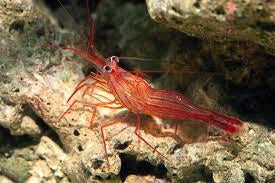
So, if you suddenly experience mass colonization of Aiptasia in your tank, it’s most likely that sexual reproduction has taken place. Once those fertilized larvae settle, they develop into new anemones. Sexual reproduction occurs when the anemone releases a mass of free-floating gametes into the water. A segment is removed from the parent’s main body, establishing itself as a new polyp within 14 days.Ī new Aiptasia anemone can grow from just one single cell! That’s why we don’t recommend pulling Aiptasia from a rock, as that method often leaves a part of the anemone behind.

Once in the aquarium, the anemone quickly reproduces both sexually and asexually.Īsexual or pedal laceration reproduction is the anemone’s most common reproducing method. How Do Aiptasia Anemones Get Into Your Tank?Īiptasia usually finds its way into your aquarium as a hitchhiker attached to live rock and amongst coral colonies. However, the anemones can deliver a nasty venomous sting that often creates a secondary infection in its victims. This can prevent the corals from feeding and photosynthesizing.Īs you can imagine, Aiptasia is generally regarded as a pest you don’t want in your fish tank! Will Aiptasia Kill Fish?Īiptasia doesn’t usually kill fish. However, the anemone’s stings can cause irritation, which increases the danger of secondary infections.Īiptasia is also a menace to corals close by, often causing the corals to close. However, most species have shorter tentacles than Aiptasia, which reduces the risk of stinging other invertebrates close to them.įortunately, Aiptasia is too small to trap any of the most popular marine fish you’ll keep in a home tank. Once trapped in the anemone’s tentacles, the prey is passed to the creature’s mouth and ingested whole.Īll anemones can sting. The cnidocytes contain venom that they use to immobilize prey items. Stinging SpeciesĪiptasia’s tentacles contain tiny, harpoon-like barbs called cnidocytes. These tiny algae cells exist within the anemone’s tissue, providing the Aiptasia with most of its energy and nutrients. The brown color of most aquarium-dwelling Aiptasia is down to the anemone’s symbiotic relationship with zooxanthellae. Some species of Aiptasia are transparent but can also be light brown to tan in color. These anemones resemble mini palm trees, having a polyp body with an oral disc surrounded by tentacles. How Do You Identify Aiptasia?Īiptasia is distinguished by its brownish or clear coloration, long stinging tentacles, and long columnar body that ranges in size from a few inches to a few centimeters tall.

So, the name literally means “always spread wings,” referring to Aiptasia’s tentacles, which are usually fully extended.

In fact, the anemone’s name comes from the Greek words: These anemones can sting their neighbors and prey and compete for space and food aggressively, which is why the species is regarded as a nuisance pest in the home fish tank. What Is Aiptasia?Īiptasia is a group of invertebrate anemones, often referred to as “glass, tube, rock, or glass rose anemones.” there are 17 species of Aiptasia. Read this guide to learn more about successfully and effectively managing Aiptasia in your fish tank. If you keep a marine or reef aquarium, you’ll probably come up against the Aiptasia anemone at some point.īut is Aiptasia a nuisance or a boon to the hobbyist? And how do you get rid of Aiptasia without harming your other livestock?


 0 kommentar(er)
0 kommentar(er)
